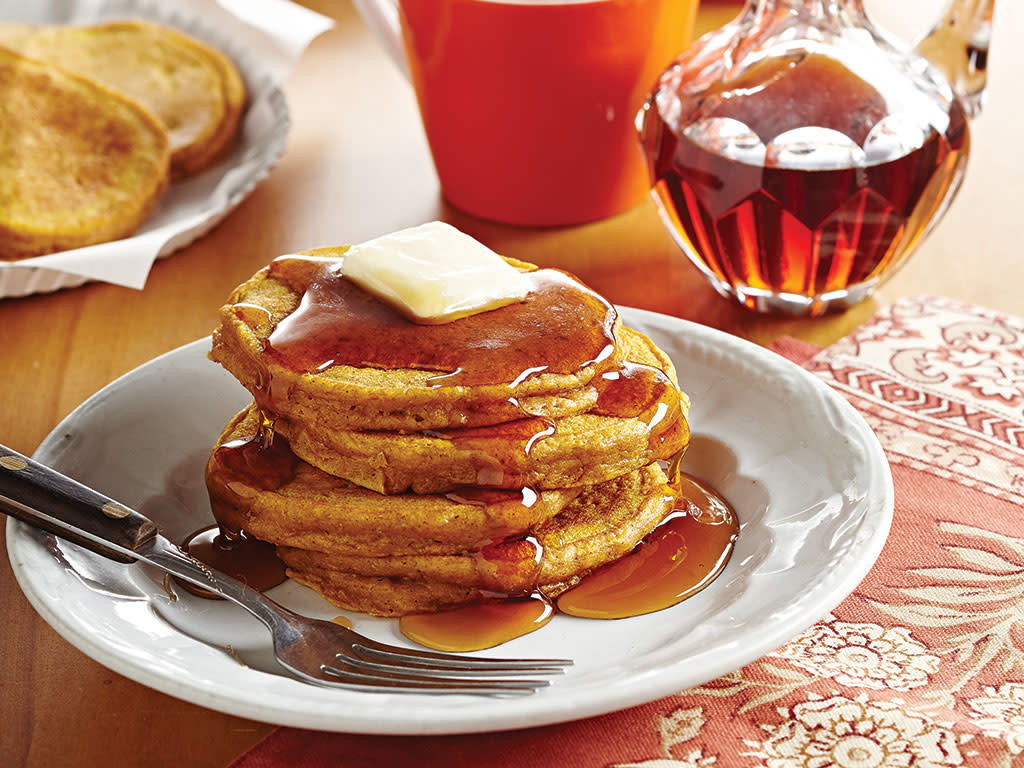All About Maple Syrup
Pure maple syrup is a sensual pleasure — it’s silky smooth and delivers flavor, color, and aroma. Real maple syrup demands attention and leaves you in awe.

While Marvin Gaye and Tammi Terrell sang “ain’t nothing like the real thing” they were probably not singing about maple syrup, but the sentiment is just as relevant — there is nothing like REAL maple syrup. Sweet amalgams of high fructose corn syrup with added flavor called “natural pancake syrup” are meaningless imposters.
How is maple syrup made?
Enjoyed for centuries now, the sap of the sugar, black, or red maple trees is reduced to a thick amber liquid by evaporating the water in the sap. The industry calls this process “sugaring” and it’s a singular harbinger of spring. The sap starts flowing when days reach 40°F and the nights fall below 20°F; the sugaring season generally ends in April when the trees begin to bud. It takes about 40 gallons of sap to produce 1 gallon of syrup. When the syrup reaches a precise level of concentration, it is drawn off to be bottled. On the whole, the arduous, lengthy process demands top dollar and is worth every penny.
IS MAPLE SYRUP HEALTHIER THAN SUGAR?
Let’s not fool ourselves: real maple syrup is not health food, although it’s rich in prebiotics and antioxidants, and unlike refined sugars, also contains calcium, potassium, iron, zinc, and manganese. However, maple syrup is typically about 50-75% sucrose, less than 10% glucose, and less than 4% fructose. That’s a lot of sugar, and it only has a slightly lower impact on the glycemic index than sugar.
NEW MAPLE SYRUP GRADES EXPLAINED
In 2015, the USDA started a new grading system for maple syrup that was eventually adopted by the syrup producing states and Canadian provinces establishing a uniform grading system. Previously there were three levels of thinner, lighter Grade A and one level of thicker, darker Grade B for sale; now all four are lumped together as Grade A. The new classifications are: Golden (delicate flavor, lightest color), Amber (rich flavor, light amber color), Dark (robust flavor, dark amber color), and Very Dark (strong flavor, darkest color). The darker the color, the deeper the maple flavor.
HOW TO SUBSTITUTE MAPLE SYRUP FOR SUGAR
If you’re substituting maple syrup for sugar, bear in mind two things when cooking or baking with maple syrup: the syrup is sweeter than sugar and it adds moisture to the recipe. A rule of thumb when cooking with syrup is to use only three parts maple syrup for every four parts of sugar. For example, if a recipe calls for ¼ cup (4 Tbsp.) of sugar, substitute with 3 Tbsp. of maple syrup instead. When baking, substitute ¾ to 1½ cups maple syrup for 1 to 2 cups of sugar, respectively. You not only have to compensate for the sweetness, but you also have to reduce the dominant liquid, like buttermilk or water, by one-fourth, too. Just don’t cut back on liquid that will alter the texture of the recipe, like eggs.
How to store maple syrup
Store unopened maple syrup in a cool, dry area out of sunlight. It can keep 1–2 years. Once it’s opened, it should be stored in the refrigerator and used within 6 months. Maple syrup can also be frozen indefinitely in a proper container.
Uses for maple syrup
The key to maple syrup is its flexibility. Used to sweeten, add flavor, or as a topping, maple syrup is a clearly flexible food accompaniment. Try it as a sweetener for tea or coffee. Add flavor to ice cream and fresh fruit. Or, add it to your baked beans or cooked vegetables.
A FEW MAPLE FAVES:
Product Recommendations
Interested in cooking? Need some supplies?
Check out some of the tools we like. All products featured on Cuisine at Home are independently selected by our editors; we may earn an affiliate commission from qualifying purchases through our links.